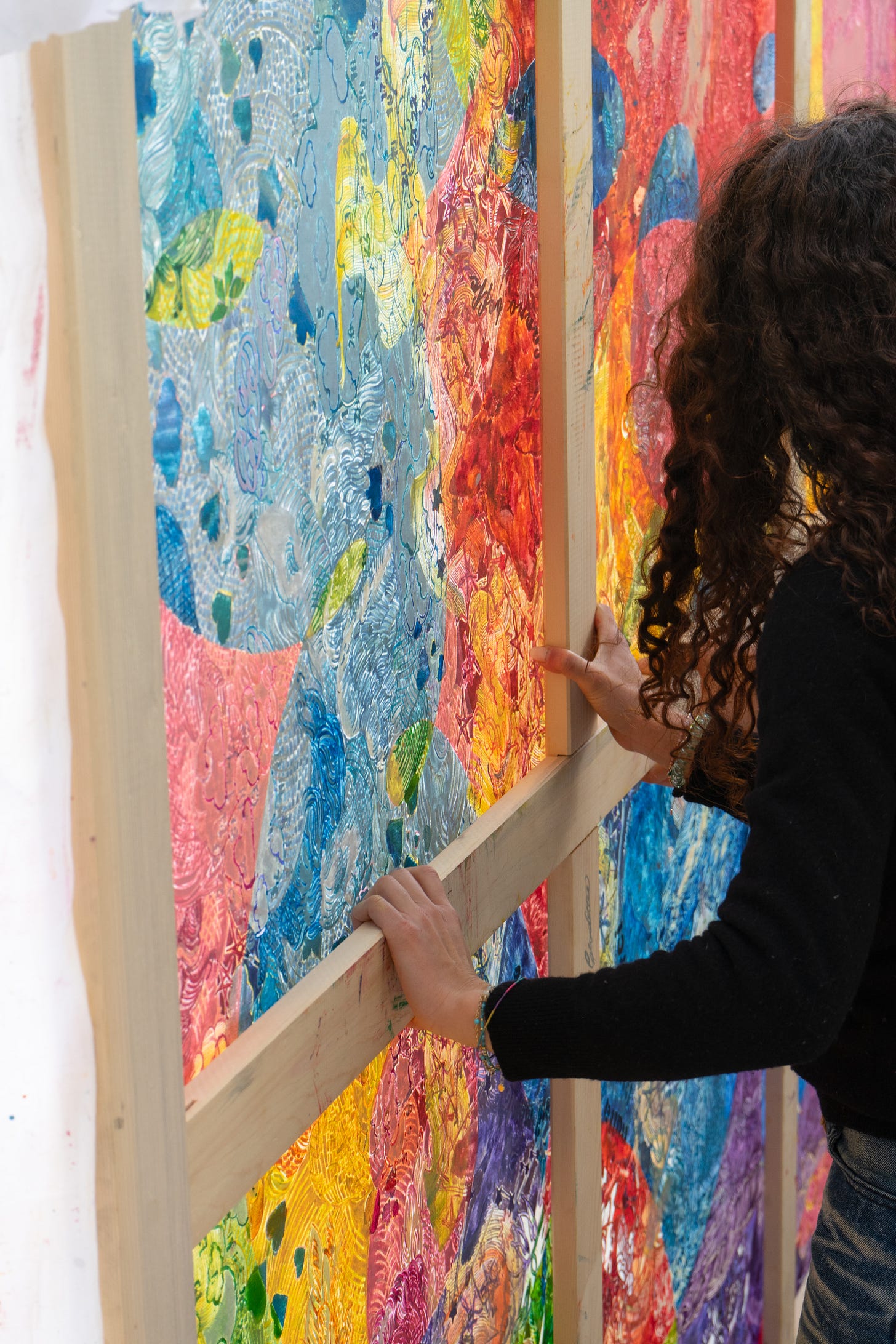#22 Sali Dispatch: A Painterly Paradox
In this week's episode we talk about a new art column, an exhibition and more...
At Cartolina, we’re excited to spotlight the work of emerging Italian artists, offering a window into their creative processes and distinctive voices. Today, we're kicking off this new series by featuring the talented Giuditta Branconi as our first artist spotlight. In upcoming episodes, we'll continue to explore the work of other rising stars, starting with an interview with Giovanni Copelli in collaboration with the founders and curators of Ondo Spazio, whom we collaborated with on a special publication about his first solo show. Stay tuned as we dive into the world of contemporary Italian painting.
"Painting is a funny medium. It’s so graphic, so immediate. But at the same time, it’s also so tactile, so physical. I love that paradox."
This paradox is at the heart of Giuditta Branconi’s latest solo show at Lupo Lupo Lupo, where color, form, and symbolism collide in a daring exploration of artistic evolution. Building on this duality, Brava—a nod to both mastery and self-assurance—unfolds as a dazzling interplay of technique, symbolism, and reinvention. Each piece pulses with her signature blend of classical and contemporary influences, forming a visual language that is as cerebral as it is instinctive.
Branconi’s fascination with repetition and duality takes center stage in the gallery. Works are displayed in pairs, inviting the viewer to explore subtle shifts between mirrored compositions. “I started by making a piece, and I thought, ‘I like this, I’ll do it again,’” she admits with a playful grin. These ‘dittico’ (diptych) works embrace imperfection, evolving with each iteration and questioning the very nature of originality.
Monochrome plays a critical role in her palette, particularly her striking use of blue and red. Yet, for Branconi, a monochrome is never static. “A monochrome is pretty much a failure in my work, but that’s where the fun starts,” she explains, relishing the tension between control and chaos. Layers of pigment create depth, hinting at the unseen energy beneath the surface.
One of the most arresting themes in Brava is the depiction of the couple—primarily through the lens of rhythmic gymnastics. Inspired by gymnasts, Ethereal figures intertwine in gravity-defying poses, their ribbons transformed into chains. “The contrast between elegance and force, beauty and captivity—it’s that tension that I’m always interested in,” Branconi muses. The series reflects her broader preoccupation with power dynamics, freedom, and constraint, resonating with both personal and collective struggles.
Her work is also rich with mystical undertones. Eyes, stars, and celestial motifs reappear throughout the exhibition, lending an otherworldly presence to her paintings. “Eyes and stars are always there—whether they’re part of a fairy tale or just part of how we see the world. They represent this mix of wonder and danger,” she says. These recurring symbols blur the line between mythology and modernity, pulling viewers into a universe where the divine and the earthly collide.
Branconi herself embodies this duality. Although she was raised without a religious framework, she is nonetheless drawn to spiritual and biblical iconography and frequently reinterprets classic themes. A central work in the show revisits the Annunciation, but with a twist: Figures merge and shift identities, subverting traditional narratives. “Eva becomes Adam. The story flips,” she says, reflecting on the cyclical nature of creation, transformation, and transgression.
Beyond the conceptual layers, Brava is a deeply personal exhibition. Branconi’s recent move from Milan to the countryside of Abruzzo has infused her work with a renewed sense of space and openness. “The vast landscapes, the quiet—it’s changed how I see things,” she shares. This shift is most evident in her smaller, more intimate pieces, which capture a newfound lightness alongside her signature intensity.
At its core, Brava is an invitation—not just to look but to engage, question, and feel. Branconi doesn’t seek to impose meaning; instead, she offers a world where contradictions coexist, symbols shift with each viewing, and art remains alive in its ambiguity. Through repetition and reinvention, she reminds us that nothing is ever fixed—not identity, not history, not even the painting itself. In embracing paradox, Branconi doesn’t just showcase mastery—she redefines it.






